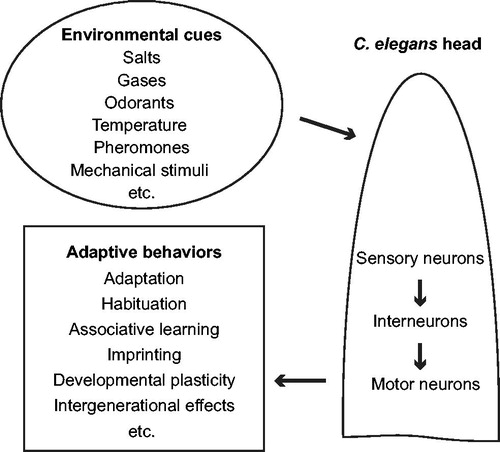Figures & data
Figure 2. Schematic diagrams showing assays for behavioral responses to PA14. (A) A small drop of supernatant of PA14 culture is used as the source of odorants to examine attractive steering movements, when a worm starts from a position relatively close to the odorant source. (B) To test the relative preference between the odorants of PA14 and the odorants of E. coli OP50, two airstreams saturated with the odorants of OP50 or the odorants of PA14 are used to deliver alternating stimuli to individual worms swimming in a small drop of buffer in an airtight chamber. (C, D) Two small drops of supernatant of bacterial culture are put on a plate immediately before the assay (C) or two small drops of bacterial culture are quickly air-dried before the assay (D) to measure the preference between the two odorant mixtures in a single worm (C) or a population of worms (D). In D, the plate does not contain peptone and therefore does not support growth of the bacteria. (E, F) A small plate with two bacteria lawns grown on the plate for a few hours (E) or for 24–48 hours (F) to be used as odorant sources. During cultivation, the bacterial lawns may produce cues diffused into the medium, produce or alter the concentration of gases in the lawn areas. (G, H) A bacterial lawn centered on a small plate (G) or completely covering a small plate (H) prepared by fully growing first at 37 °C and then at 25 °C to examine the lawn avoidance/occupancy or survival of the worms over time.


